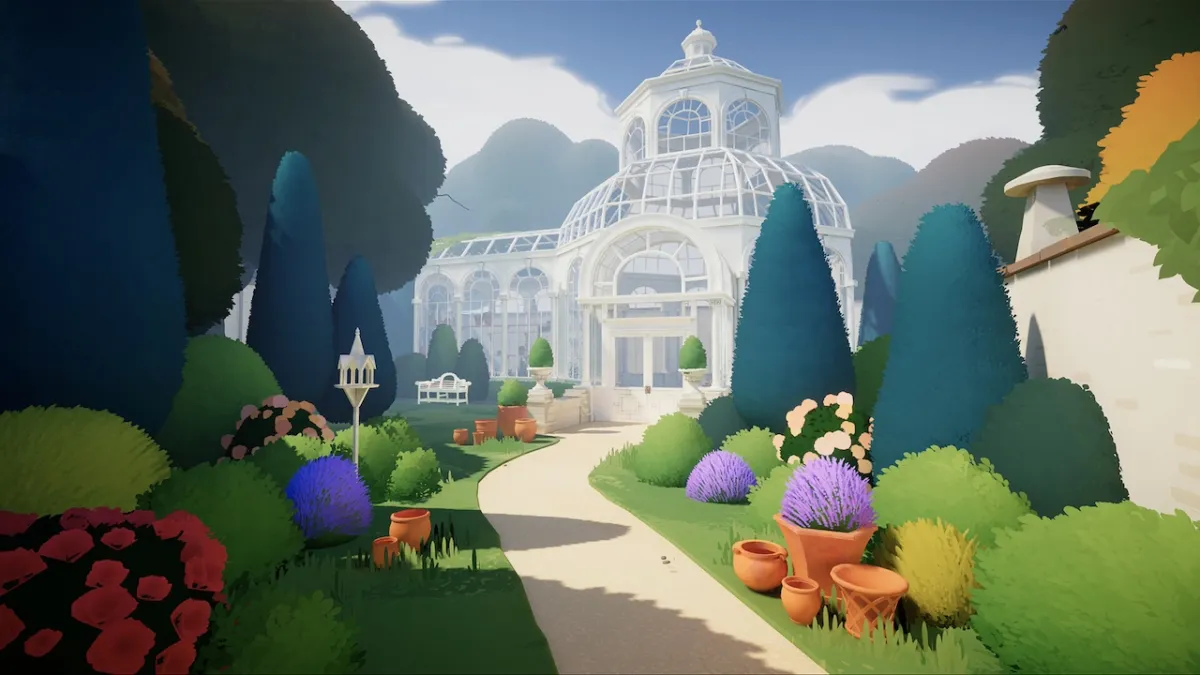I like mercury; the element, I mean. That might sound odd, but bear with me: I’ve played a lot of games over the years – and I mean a lot – and right now mercury is one of the few things I can think of that, in these many games, I haven’t either killed or been killed by. Insects big and small? Killed. Trees? Killed. Planks? Smashed into pieces. Tigers? Aliens? Monsters? Rocks? Books? Shot, stabbed, ripped apart, crushed, torn up. But mercury? That’s new to me. (I await the comment that reminds me of a 1989 game featuring a blob of hostile mercury that I will have almost certainly played. Thanks in advance for that particular kick to the groin, readers.)
So you could say that Mercury Hg caught my interest. It’s got elements of puzzlers but it’s more closely related to 1984’s swear-a-thon generator Marble Madness – a time-trial in which players very, very carefully manoeuvred a slippery marble around an infuriatingly obtuse course that was hand-crafted by complete bastards to piss me off as much as possible. Mercury Hg, conversely, has players moving a blob of viscous mercury around courses that are actually rather pleasant.
Each of Mercury Hg’s 60 levels has four “atoms” that function as completion markers; gathering a certain number of atoms unlocks the next set of levels. One is awarded for simply completing the course, another for doing so without losing a drop of mercury, a third for picking up each of the level’s bonus items (which, confusingly, are also atoms), and the final one is doled out for completing the course within a set time.
You don’t actually control the blob of mercury directly. Instead, you control the board, tilting it to make the mercury slosh in a certain direction – or to make it stop quicker, as it rapidly builds up inertia. It’s a little like those old plastic toys in which you needed to get ball bearings through a maze and into individual holes, which you accomplished by tilting it around.
The fact that you control the board rather than the mercury ties into some of the mechanics. The mercury itself is made up of multiple drops; if part of it rolls over an edge, some of these drops will fall off the edge and into oblivion. Alternatively, if you smash it into a corner or through a triangle-shaped splitter, you’ll suddenly find that you’re controlling multiple blobs of mercury. These are easily reassembled with a tap of the A button (assuming they’re in close proximity) but having multiple blobs is required for certain puzzles.
Sometimes, the courses are walled off, and losing mercury is impossible. Other times the mercury is rocketing down courses with edges that slope off into the voids, requiring expert finesse. A few levels make use of blocks that attract or repulse you. Occasionally, sections of the map are walled off unless your mercury is a certain colour, or features switches can only be flicked by coloured mercury; thankfully, there are blocks that can shift your blob’s hue. But what to do if there’s a yellow barrier and the only colour-changers around are green and red? Why, cut your blob into two, make one of each colour, and then merge them, of course.
This probably sounds complicated and difficult. Oddly, it’s neither of those things: each of the stage completion atoms can be acquired separately, so if need be you can simply do three runthroughs – a quick one, a careful one, and an exploratory one – to get them all. Levels aren’t particularly long and the focus is really on manual dexterity rather than puzzle solving. There were only three or four levels that required repeated restarts, and one of those was simply down to my impatience causing problems (which then made me even more impatient).
There are trickier bonus stages on offer for savvy course-handlers, thankfully. Getting all of the bonus items on certain courses unlocks harder, remixed versions of those levels, in which players must navigate the course, collect all bonus items, and not lose a single drop of mercury. There’s also a challenge mode present which tasks players with completing several levels in a row and achieving certain goals along the way, like keeping 50% of your mercury throughout and getting at least 8 bonus items. It’s still not quite enough for me but then I like a serious challenge, particularly in a game with mechanics as enjoyable as these. Perhaps an enforced time limit rather than a soft one would appease me.
On that note, it’s also a bit of a shame that more isn’t made of the possibilities. While there are plenty of different obstacles there remains a nagging sense that more could’ve been done, particularly with regards to the rather unique way the player “character” moves and shifts. Splitting into multiple blobs and reforming is one thing, but there are plenty of other ways that you can use a liquid protagonist. The game makes it clear that a pair of DLC packs are coming, so let’s hope that they’ve got some more inventive and difficult tracks.
But I digress: the mechanics are enjoyable. It’s hard to put it into words but the mercury moves “properly” – it’s like the first time you took control of Mario and, despite not being easy to control, it felt natural and correct. You instinctively knew his limits, the time it would take him to stop, and how he’d react. It’s the same here and that’s of paramount importance for a game based around movement, particularly one in which your tilting of the board is often moving multiple blobs of mercury as well as affecting some of the obstacles on the board.
Oddly, none of this is what I noticed first. As all six of my Twitter followers know, when I first booted up Mercury Hg it made a big deal about being able to play custom music so I spent twenty minutes teaching the Xbox to stream music from my PC. The impact isn’t huge – this is no Rez or Audiosurf – but the ground pulses to the tempo and the background shifts to the beat. It’s a nice touch, and one I’m always happy to see. (For the record: Daft Punk’s Alive is a bit too dark, so if you can bear the embarrassment I’d highly recommend something quick and pop-y, like Genki Rockets.)
For all of this, it’s the sort of game I can’t help but damn with faint praise. Mercury Hg is fine. No, it’s more than that; it’s actually rather good. It just lacks the special something that makes it really click; it lacks the thing that gets the synapses firing and the endorphins pumping.
The custom music is an excellent touch, but it doesn’t quite go far enough in terms of impacting the experience. The levels are well-designed, but they’re simple enough that it’s all too easy to go through the motions. The graphics are lovely – they really are; all shining lights and an elegant use of colours, with some interesting effects like the floor coming together as you approach; it looks a lot better in motion than in still shots – but they lack that little something that ties it all together.
And that’s where the final fact comes in to save the day: the price. Mercury Hg is a mere 400 Microsoft Points, and it’s certainly worth every penny. It doesn’t do enough with the interesting concept and it’s not a hugely lengthy title, but it’ll give you a good few hours of enjoyment, and it’s hard to ask more than that for £3.50.
Reviewed on Xbox 360. Also available on PlayStation 3.
Read Article Infection Free Zone review – Zombies in your backyard

Rating:
7.5

Category:
Reviews
Infection Free Zone review – Zombies in your backyard


